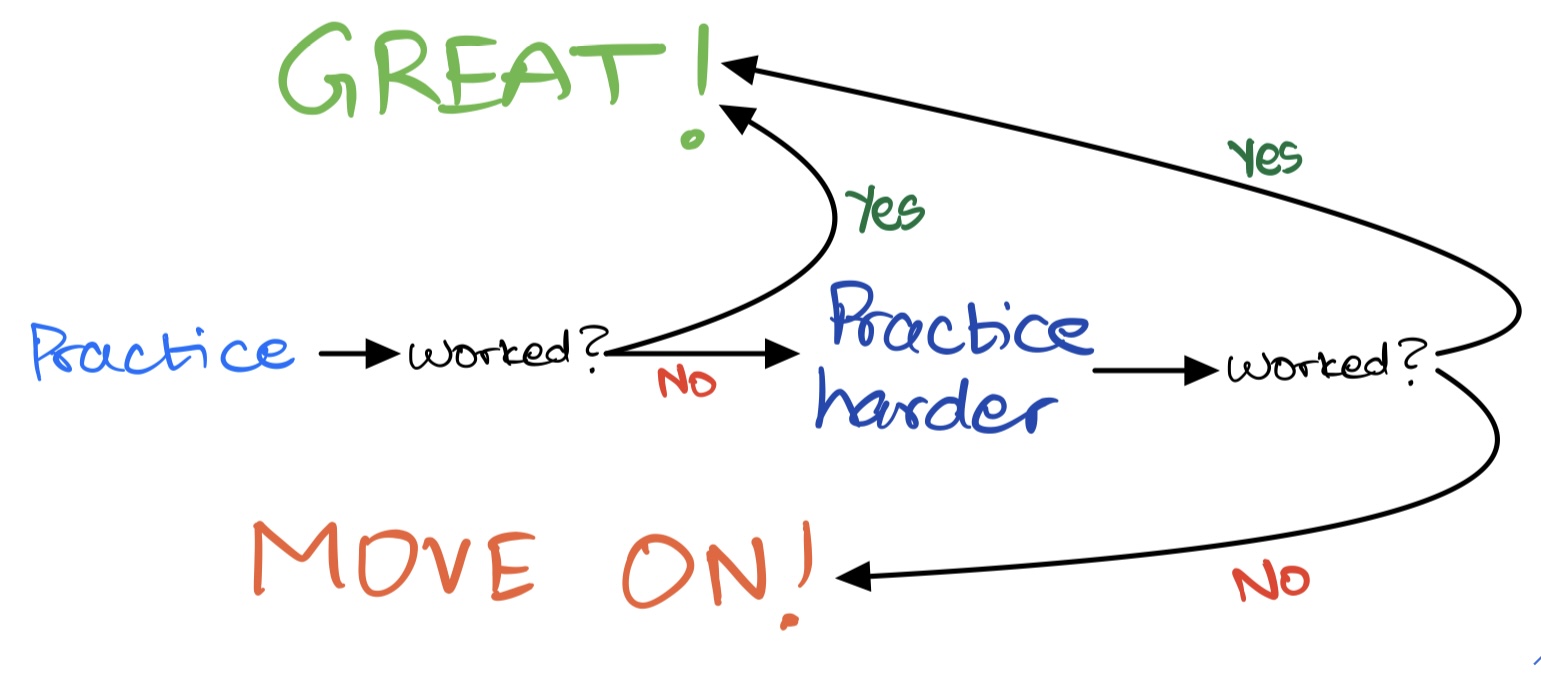This first AIMCAT gave me a lot of (severely misguided) confidence. I decided to keep preparing the same way, watching concept lectures without solving practice. “Solving can come later”, I told myself. My next AIMCAT scores dropped considerably (way down to the 70s), and so did my confidence.
Recommended For You → Skipping CA Campus Placements And Landing At SPJIMR- Journey Of CA,CS Shakshi Sodhani
Lessons learnt:
1) One does not STUDY for CAT, one PRACTICES for CAT.
2) Take mock test percentiles seriously, but do not take them too seriously.
It was at this point, in June 2020, that I started strategizing seriously. I requested a 2 month leave till exam-day, which my bosses were gracious enough to approve (something I am thankful for as I realise not everyone is lucky enough to get such supportive bosses). I decided to continue and complete the concept lectures, to start solving practice after that, and to keep taking mock tests for practice. While I did complete the concept lectures and took most of the mock tests, I was unable to start solving practice before my study leave began. The mock test scores at this point still remained low.
When my study leave began, I had watched all concept lectures and taken about 7 mock tests. That’s it. I realized that 2 months were not going to be enough time to even solve the entire practice material provided by TIME, let alone any extra practice. I decided to go with a horizontal approach instead- practicing a few sums of different types for each chapter but ensuring that I cover all chapters with time to spare. In my CA days, I was used to studying for 10-12 hours a day at ease, but CAT requires a vastly different approach and frame of mind. I was unable to study for more than 5 hours a day. While this caused a great deal of anxiety, I continued to do as much as I could, leveraging mock test results and their analysis to decide which chapters to focus on, and which chapters to ultimately leave out. I also prepared a notebook of formulae and tips and tricks (for QA and well as DILR) to solve specific types of problems that I was struggling with. With more focus on accuracy rather than attempts, I zeroed in on topics for which I was getting answers wrong and practiced them for hours on end. With this method, my mock test percentiles gradually improved, despite my practice being much lower than what conventional CAT wisdom requires. Still, my mock test scores were barely touching 90, and only twice had I crossed the 90 percentile mark.
Come exam day, some part of me had lost the hope of a good score, but I still decided to put up a fight, one last time. I worked through the exam with the same strategies as I had done during the mock tests, but the paper set was quite difficult, and I was far less optimistic after the exam than I was before. The end result, however, turned out great:
VARC: 99.83, DILR: 97.9, QA: 89.74, Overall: 99.08
In hindsight, I find that I truly understood CAT as an examination very late in my preparation process. While things ended up well, low confidence and persistent anxiety is never the right way to go about doing anything. While my CAT preparation method was not quite conventional, it seems to have worked! I would like to share the following as my key takeaways:
My key takeaways for CAT aspirants
Your way is the right way:
There is no right time, right way or right amount of preparation for CAT. Contrary to popular opinion, CAT does not require a great quantity of study, it requires smartly planned, qualitative preparation which is personalized to your own strengths and weaknesses.
Mock tests are supreme:
Beyond a point, the number of hours studied or the number of sums solved becomes a worthless measure of your preparation. Measure your preparation only by three indicators from the mocks:
i) Attempts- how many questions you can solve during mock tests
ii) Accuracy- how many of the solved questions do you get right
iii) Percentile- subject-wise percentile and overall percentile
As long as your percentile inches forward, even incrementally, with each successive test, you are on the right path. And to make sure it inches forward, objectively analysing every mock in excruciating detail is essential. This analysis may take more time than actually taking the test, but it gives a massive boost to the quality of your preparation. Identify topics that you are good at, topics that need more work, and topics that are lost causes. Most importantly, understand that mock test percentiles are naturally lower than the actual CAT percentiles, since the competition is completely different. Do not fixate on that number; simply focus on gradual improvement.
Know when to move on:
While it is important to work harder on difficult topics, there are some topics which are not even worth the effort. Every CAT aspirant, based on their skills and academic background, will find topics that they are just unable to get right in spite of significant effort. If you are faced with such a topic, MOVE ON!. Remember that not more than 3-4 questions in the CAT exam will be based on a single topic. Further, you may not even have enough time to attempt them. Consider that you can always come back to such elusive topics later, if you finish preparing for everything else and still have time left (unlikely). Ask yourself :

Balance is important:
Do not focus excessively on one subject at the cost of another. With CAT, a moderate but balanced subject-wise percentile will give a far higher overall percentile, than combinations of very high and very low subject-wise percentiles.
Similarly, do not choose between Accuracy and Attempts- both are dangerous in isolation, but make a winner in combination. Reasonable number of questions attempted with high accuracy is the way to go!
Seek advice, but form your own strategy:
Find out as much as you like about other people’s CAT journeys, but only for suggestive inputs. Do not solve Arun Sharma because they solved Arun Sharma. Do not drink kombucha because they drank kombucha. Take all tips that past CAT takers give with a pinch of salt, only to decide your own approach and targets. If your approach is meeting your targets, don’t change it. If it is not, analyze mocks to find out where the issue lies, and make specific changes.
Which coaching class to attend, which study material to use, and what schedule to follow do not make much difference when you are taking the CAT. What will matter is your assessment of your strengths and weaknesses, meticulous planning, consistent (even if slow) preparation and how well you analyse your mocks.
This was my CAT journey, and all that I learned from it. All the best for yours! Do reach out to me if you have any queries, I would be happy to help!
PS: A big thanks to Tanaya Parkhi for the wonderful illustration, and to all my friends for their reviews and suggestions!









Comments